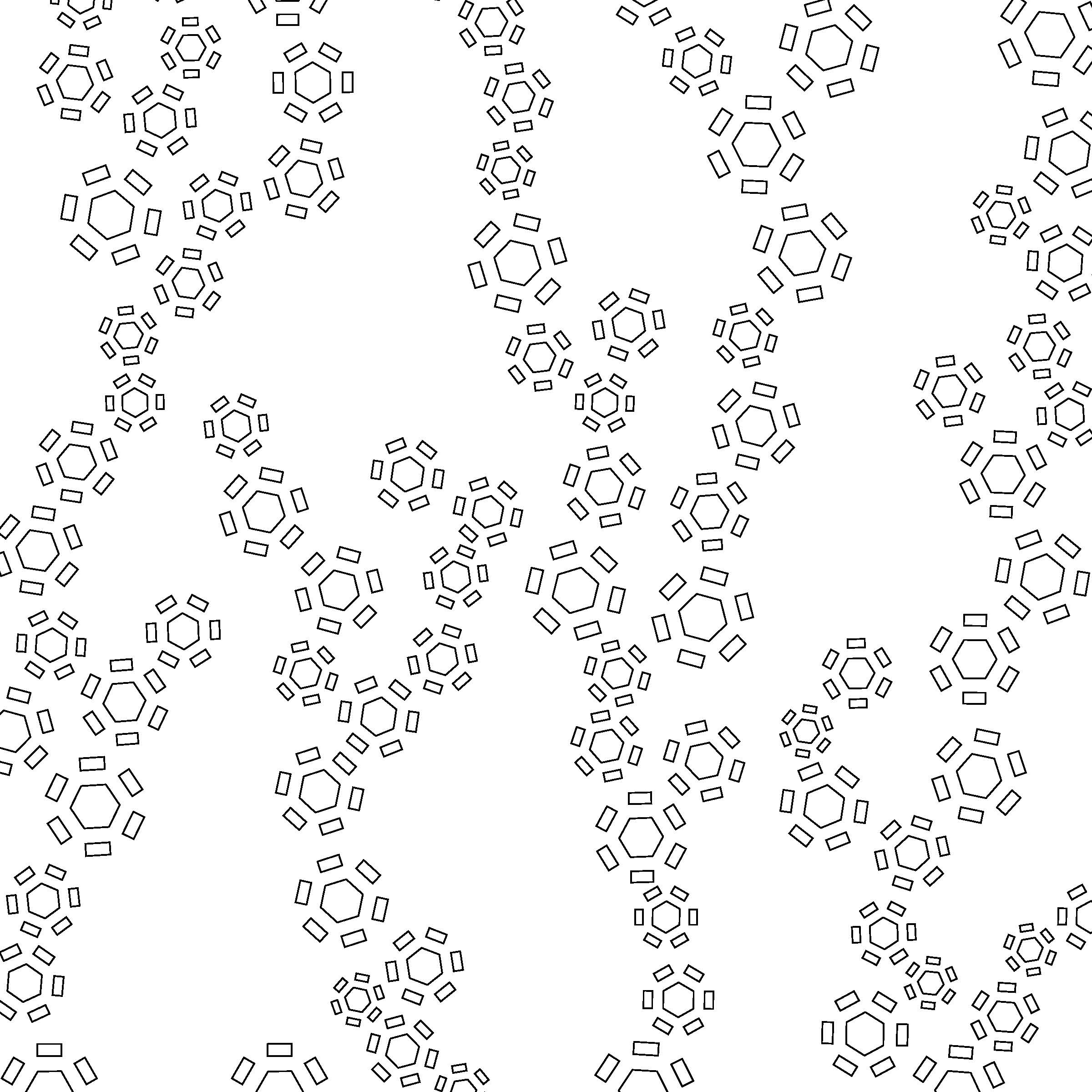Ralph-Assignement-06-LasercutScreen (UPDATED)
The pattern currently does not utilize a particle system. I am still working on making each hexagonal unit (as a particle) stack on top of each other in an organic way using repulsion force. While I’m still tweaking that, I put together this image as my placeholder piece for now.
UPDATE!
The code is working precisely as I described now. Here’s the son-of-a-bitch:
Link to the piece on OP: https://openprocessing.orgsketch/113878
ArrayList myPattern;
int maxPattern = 1;
void setup() {
size (864, 864);
myPattern = new ArrayList ();
}
void draw() {
background(255);
for (int i=0; i= ithPattern.py) {
float jx = jthPattern.px;
float jy = jthPattern.py;
float ix = ithPattern.px;
float iy = ithPattern.py;
float distance = sqrt((jy-iy)*(jy-iy) + (jx-ix)*(jx-ix));
//radius of pattern
if (distance < (jthPattern.l*2.6 + ithPattern.l*2.6)) {
myPattern.get(i).addForce(0, 0);
ithPattern.vy = 0;
}
}
}
ithPattern.update();
ithPattern.render();
}
if (maxPattern < 400) {
maxPattern ++;
}
}
//=========================================================================
class Pattern {
float l;
float ptheta;
float px;
float py;
float vx;
float vy;
//constructor for Pattern
Pattern(float x, float y, float theta, float rl) {
ptheta = theta;
px = x;
py = y;
l = rl;
}
// Add a force in. One step of Euler integration.
void addForce (float fx, float fy) {
float ax = fx;
float ay = fy;
vx += ax;
vy += ay;
}
void update() {
px += vx;
py += vy;
if (py > height) { //land
py = height;
}
}
void render() {
pushMatrix();
translate(px, py);
rotate(ptheta);
noFill();
strokeWeight(1);
line(-l, 0, -l/2, round(-0.866*l));
line(-l/2, round(-0.866*l), l/2, round(-0.866*l));
line(l/2, round(-0.866*l), l, 0);
line(l, 0, l/2, round(l*0.866));
line(l/2, round(l*0.866), -l/2, round(l*0.866));
line(-l/2, round(l*0.866), -l, 0);
for (int i = 0; i < 6; i++) {
rotate(PI/3);
rect(-l/2, 3*l/2, l, l/2);
}
popMatrix();
}
}

